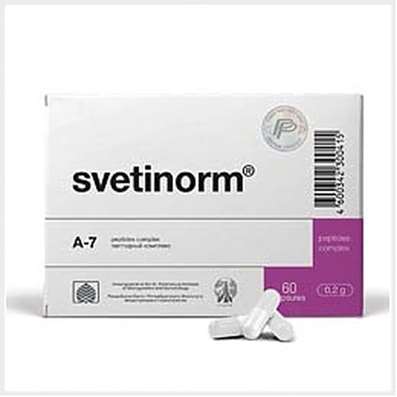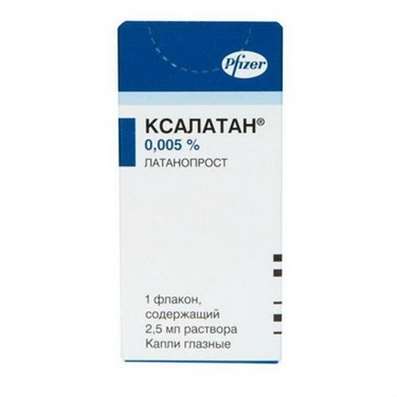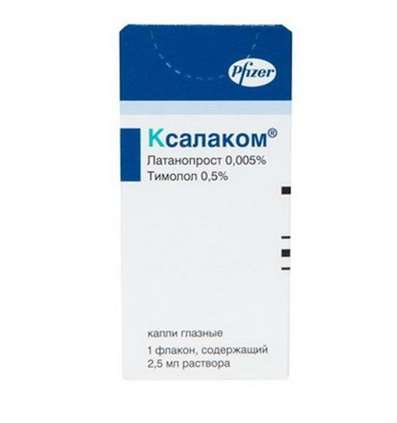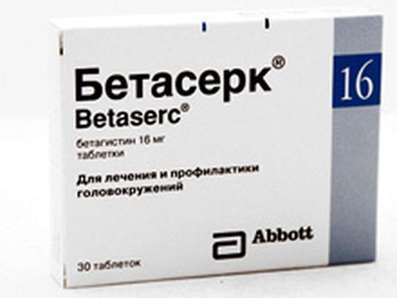Instruction for use: Airtal
I want this, give me price
Active substance Aceclofenac
ATX Code M01AB16 Aceclofenac
Pharmacological group
Non-steroidal anti-inflammatory drug (NSAID) [NSAIDs - Acetic acid derivatives and related compounds]
Nosological classification (ICD-10)
M43.6 Torticollis
Congenital torticollis
M54.4 Lumbago with sciatica
Pain in the lumbosacral spine, Lumbago, Sciatica, Lumbar syndrome
M77.9 Other unspecified
Capsule, Periarthritis, Tendonitis, Tendopathy, Periarthropathy
R52.9 Unspecified Pain
Pain after cholecystectomy, Pain shooting, Non-malignant pain, Obstetric and gynecological pain, Pain syndrome, Pain in the postoperative period, Pain in the postoperative period after orthopedic surgery, Pain of inflammatory genesis, Pain than cancer genesis, Pain syndrome after diagnostic procedures, Pain after surgery Diagnostic, Pain after surgery, Pain after orthopedic surgery, Pain after injuries, Pain after the removal of hemorrhoids, Pain at the non-rheumatic inflammation of nature, Pain in inflammatory lesions of the peripheral nervous system, Pain in diabetic neuropathy, Pain in acute inflammatory diseases of the musculoskeletal system, Pain when the tendon pathology, Pain smooth muscle spasm, Pain spasm of smooth muscles (renal and biliary colic, intestinal spasms, dysmenorrhea), Pain spasm of smooth muscles of internal organs, Pain spasm of smooth muscles of internal organs (kidney and biliary colic, intestinal spasms, dysmenorrhea), Pain in trauma syndrome, Pain with injuries and after surgical interventions, Pain in chronic inflammatory diseases of the musculoskeletal system, Pain with duodenal ulcer, Pain syndrome in gastric ulcer, Pain syndrome in gastric ulcer and duodenal ulcer, pain, Pain during menstruation, pain syndromes, painful condition, Painful foot fatigue, Sore gums when wearing dentures, Soreness of the cranial nerves exit points, Painful menstrual irregularities, Painful dressings, Painful muscle spasm, Painful teeth growth, Melosalgia, Pain in the area of the surgical wound, Pain in the postoperative period, Pain in the body, Pain after diagnostic procedures, Pain after orthopedic surgery, Pain after surgery, The pains of the flu, Pain in diabetic polyneuropathy, Pain for burns, Pain during sexual intercourse, Pain during diagnostic procedures, Pain during therapeutic procedures, for colds Pain, Pain in sinusitis, Pain in trauma, Pain traumatic, The pain in the postoperative period, Pain after diagnostic procedures, The pain after sclerotherapy, Pain after surgery, postoperative Pain, Pain postoperative and posttraumatic, posttraumatic pain, Pain when swallowing, Pain in infectious and inflammatory diseases of the upper respiratory tract, The pain of burns, The pain in traumatic muscle injury, Pain in trauma, The pain of tooth extraction, The pain of traumatic origin, Pain caused by spasm of smooth muscles, Expressed pain syndrome, Expressed pain syndrome, traumatic origin, Postoperative pain, Post-traumatic pain, Post-traumatic pain syndrome, Torpid pain, Traumatic pain, Traumatic pain, Mild pain, Moderately severe pain, Moderate pain, Polyarthralgia with polymyositis
R68.8.0 * Inflammatory syndrome
Painful syndrome of inflammatory genesis, Pain syndrome with inflammation of non-rheumatic nature, Pain syndrome with inflammatory lesions of the peripheral nervous system, Painful inflammation of the shoulder joint, Painful inflammation after trauma or surgery, Painful inflammation after surgery, Painful hemorrhoids, Inflammation of the tympanic membrane, Inflammation of the larynx, Inflammation of the gums, Inflammation of cellulose, Inflammation of lymph nodes, Tonsillitis, Inflammation of muscles, Inflammation of soft tissues, Inflammation of the mouth, Inflammation after surgery and trauma, Inflammation after orthopedic surgery, Inflammation after trauma, Inflammation in rheumatoid arthritis, Inflammation of the middle ear, Inflammatory gum disease, Inflammatory diseases of the eyelids, Inflammatory eye diseases, Inflammatory swelling of soft tissues, Inflammatory processes, Inflammatory processes after surgical interventions, Inflammatory process, Inflammatory Syndrome, Inflammatory syndrome of non-rheumatic origin, Inflammatory syndrome after surgery, Purulent infections, Infringements of function of a liver of an inflammatory etiology, Acute inflammation of the musculoskeletal tissue, Pre-inflammatory soft tissue inflammation
T03.9 Multiple dislocations, sprains and injuries of capsular-ligamentous apparatus of joints, unspecified
Dislocation, Dislocations, Distortion
T14.0 Surface injury of unspecified body region
Abrasions, Scratch, Skin Wounds, Wounds of soft tissues, Hematoma, Hematoma of traumatic origin, Hematomas, Hematomas of muscles, Hematomas of soft tissues, Healing of the skin, Bruise, Bruising due to sprains and bruises, Microtrauma, External bruises, Small combing, Superficial hematoma, Superficial damage to the skin and mucous membranes, Subcutaneous hematoma, Post-traumatic hematoma, Post-traumatic disturbance of microcirculation, Skinness of the skin, Traumatic plexus lesions, Injury, Contusion of soft tissues, Joint bruise, Traumatic bruises, Traumatic injury, Primary treatment of surface contaminated wounds, Abrasion, Bruise
T14.3 Dislocation, sprain and damage to the capsular-ligamentous apparatus of the joint of the unspecified area of the body
Painful stretching of muscles, Pain and inflammation in tension, Dislocation of dislocation, Degenerative changes in the ligamentous apparatus, Edema due to sprains and bruises, Edema after interventions for sprains, Damage and rupture of ligaments, The musculoskeletal system is damaged, Damage to ligaments, Damage to the joints, Ligament ruptures, Tendon tendons,Ruptures of the tendons of muscles,Stretching, Crick, Stretching of the muscle, Sprain, Tension of the tendons, Extensions,Stretch muscles, Sprains, Tension of the tendons, Injury of the musculoskeletal system, Injuries to the joints, Injuries of capsule-articular tissues, Injuries of the osteoarticular system, Injuries to ligamentsInjuries to the joints, Joint wounds, Stretching of the ligamentous apparatus, Habitual stretching and tearing
T14.9 Injury unspecified
Pain syndrome after trauma, Pain syndrome with injuries, Pain syndrome with trauma and after surgery, Pain in case of injury, Pain of a traumatic nature, Joint pain with injuries, Postoperative and post-traumatic pain, Pain in case of injury, Pain of a traumatic origin, Severe pain syndrome of traumatic origin, Deep tissue damage, Deep scratches on the trunk, Closed injury, Minor Household Injuries, Minor skin damage, Violations of the integrity of soft tissues, Uncomplicated trauma, Extensive traumatic injury, Acute pain syndrome of traumatic origin, Edema with trauma, Postponed sports injuries, Post-traumatic pain, Soft tissue injuries, Joint wounds, Sports injuries, Injury, Traumatic pain, Traumatic pains, Traumatic infiltrate,Injuries to sports
Composition
Cream for external use 1 g
active substance:
aceclofenac 100% micronized 0.015 g
auxiliary substances: wax emulsion - 0.1 g; paraffin liquid - 0.04 g; methyl parahydroxybenzoate 0.002 g; propyl parahydroxybenzoate 0.0005 g; water 0.8425 g
Description of dosage form
Cream: white, homogeneous.
pharmachologic effect
Pharmacological action - anti-inflammatory local.
Pharmacodynamics
Aceclofenac is an NSAID with an anti-inflammatory and analgesic effect. The drug inhibits the development of edema and erythema, regardless of the etiology of inflammation. Aceclofenac suppresses the formation of PG and LT due to the reversible suppression of COX-1 and COX-2.
The established clinical efficacy of the drug is supplemented by good tolerability.
The use of AirtalŪ cream is useful in patients with traumatic injuries or inflammatory diseases of the musculoskeletal system.
Pharmacokinetics
Suction
Aceclofenac is absorbed from the application area, rapidly reaching a saturation state. The drug is delayed in the suction region, which increases its anti-inflammatory efficacy, and constantly enters the systemic blood stream, but at such low concentrations that secondary effects, especially from the gastrointestinal tract, are absent.
Distribution
Aceclofenac is distributed throughout the body.
Excretion
Metabolism of aceclofenac is carried out in the liver, the drug is excreted slowly by the kidneys and through the intestine, partially unchanged.
Indications of AirtalŪ
Treatment of pain and inflammation in the following conditions and injuries of the musculoskeletal system:
tendonitis;
myositis;
tenosynovitis;
stretching;
injury;
dislocation;
periarthritis;
lumbago;
torticollis.
Contraindications
hypersensitivity (including to other NSAIDs);
violation of the integrity of the skin at the site of the intended application;
pregnancy;
childhood.
With caution: hepatic porphyria (exacerbation); erosive and ulcerative lesions of the gastrointestinal tract (in the phase of exacerbation); severe violations of the liver and kidneys; chronic heart failure; bronchial asthma; urticaria or acute rhinitis, triggered by the use of acetylsalicylic acid or other NSAIDs; disorders of blood clotting (including hemophilia, prolonged bleeding time, a tendency to bleed); elderly age; lactation period.
pregnancy and lactation
Data on the safety of the drug during pregnancy is currently not enough, so AvitalŪ should not be used during pregnancy.
At present, there is no evidence as to whether aceclofenac penetrates into breast milk. Decide whether to continue / stop breastfeeding or continue / stop therapy with AeraltŪ cream after evaluating the intended benefit to the mother and the potential risk to the baby, as well as the benefits of breastfeeding for the baby and the benefits of using AvetalŪ cream in a woman.
Side effects
The data are classified according to the system-organ classes according to the MedDRA classification with the following frequency: seldom - ≥1 / 10000 to <1/1000; very rarely - <1/10000.
From the skin and subcutaneous fat: rarely - erythema, itching, skin irritation; very rarely - the reaction of photosensitivity.
Interaction
Although there is currently no evidence of a possible drug interaction with other drugs, precautions should be taken if the patient simultaneously takes any other drugs, especially those containing lithium, digoxin, and when taking oral contraceptives, diuretics or other NSAIDs .
Dosing and Administration
Outwardly.
Apply to the skin 3 times a day with light rubbing movements. The amount of applied cream depends on the size of the skin area in the area of the intended application - 1.5-2 g of AirtalŪ cream is applied to the skin area of 5-7 cm2, (a column of cream about the size of a pea).
The need for dose adjustment in elderly patients is absent.
Do not use when applying pressure bandages.
Overdose
Symptoms: In case of an overdose or unintentional intake of the drug inside, dizziness, headache, hyperventilation of the lungs with increased convulsive readiness, nausea, vomiting, abdominal pain may be observed.
Treatment: gastric lavage, the appointment of activated charcoal, symptomatic therapy. Specific antidote of the drug does not exist. Forced diuresis, hemodialysis are ineffective.
special instructions
If you notice symptoms of local irritation when taking AvertalŪ cream, use the drug should stop and begin appropriate treatment.
After applying the cream, you should thoroughly wash your hands, except when the hands are the area of application of the cream. Do not apply the cream in the eyes and mouth.
Do not use AirtalŪ cream to treat open wounds, mucosal lesions, and irritated skin (eczema). The cream should be applied only to intact skin.
The AirtalŪ cream contains cetostearyl alcohol, methyl parahydroxybenzoate and propyl parahydroxybenzoate, which can cause local skin reactions (eg contact dermatitis, the development of which can be delayed in time).
Influence on the ability to drive vehicles and work with machinery. The use of AirtalŪ cream does not affect the ability to drive vehicles and work with machinery.
Form of issue
Cream for external use, 1.5%. In a tube of aluminum, 60 g of cream. One tube in a cardboard box.
Conditions of leave from pharmacies
On prescription.
storage Conditions
At a temperature of no higher than 25 ° C.
Keep out of the reach of children.
Shelf life
2 years.
Do not use after the expiry date printed on the package.

 Cart
Cart





